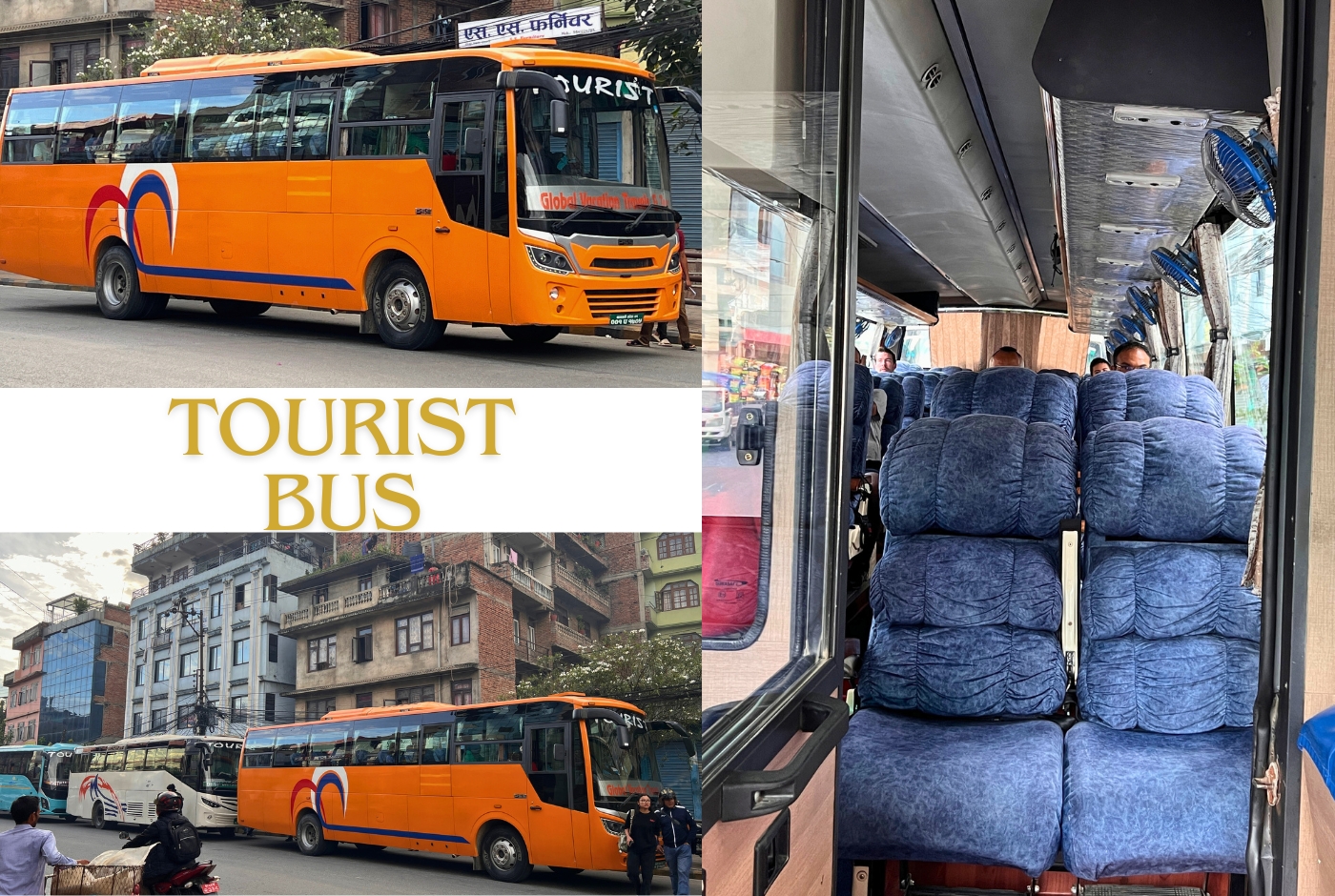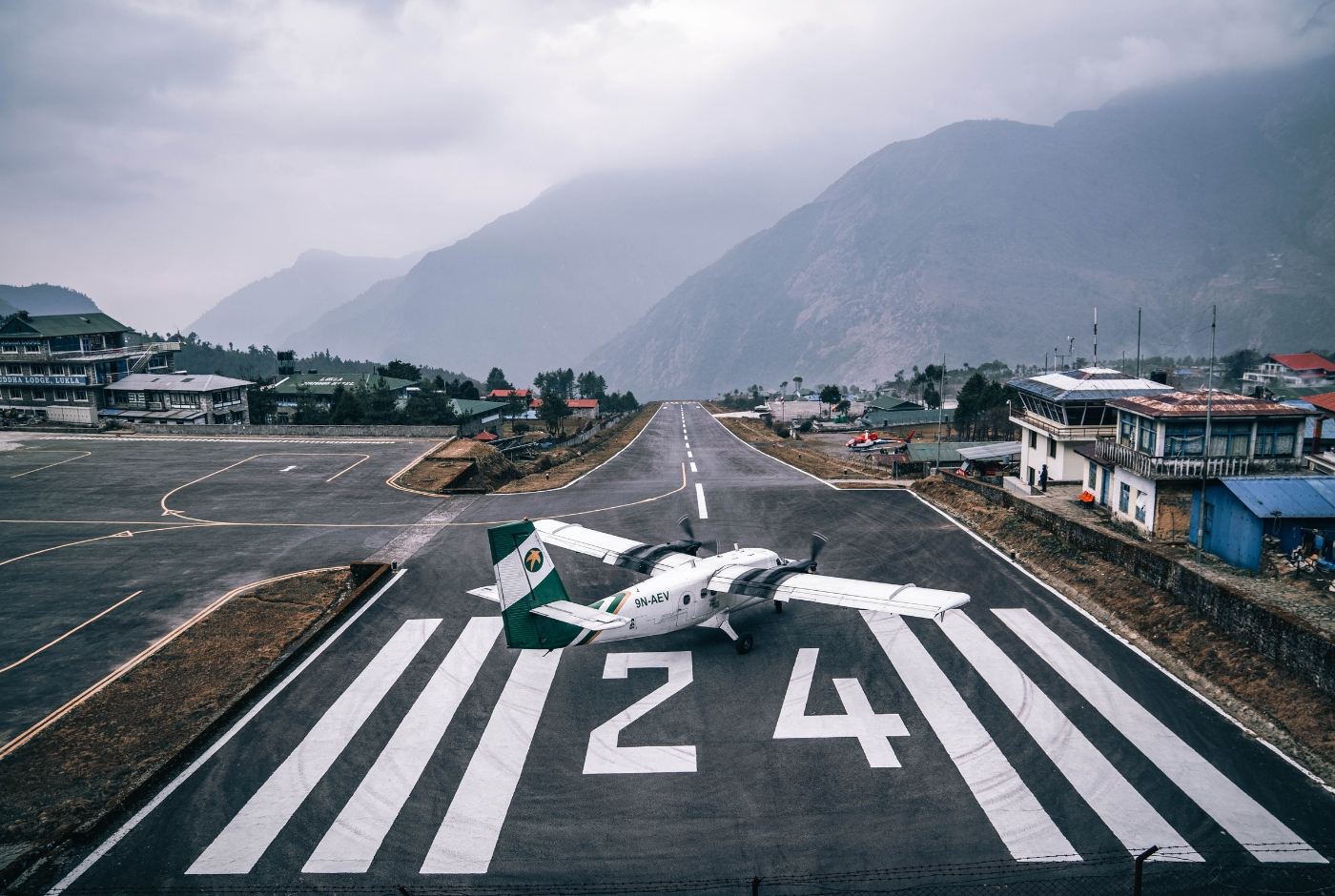Nepal is a small country, but it takes time to travel due to poor road conditions and winding roads through the mountains. Upon first glance, Kathmandu appears to be a city of chaos that is difficult to navigate. Between the intense traffic and winding streets, it can be a challenging endeavor. However, there are systems in place that will allow you to see beautiful and historic parts of the city with ease. There are also several options to get outside the city and see the rest of the country.
Taxis
Taxis are often the first choice for most foreigners traveling in Kathmandu. They are generally inexpensive, especially when compared to taxis in the West. Most taxis are quite small and only fit 2 or 3 people and their luggage. They are easy to spot as they are usually yellow and white with a black number plate and topped with a small taxi sign. While drivers are supposed to use the meter to determine their fare, most are unwilling to do so. This means that you should negotiate your fare before getting in to determine a fair price for the ride.
If you are traveling from the airport, the price of a taxi will be fixed and inflated. This is unfortunately non-negotiable and the same for foreigners and locals alike. However, in all other situations, be sure to negotiate as prices are inflated (especially around tourist areas like Thamel), and you should be able to reduce the price by at least a couple hundred rupees.
Buses and Public Transport

There are various busses and tempos (small three-wheeled vehicles powered by electricity or gas) that connect the city to the surrounding suburbs and villages. If you are looking for an inexpensive way to travel throughout the city and to nearby centers such as Bhaktapur, this is a great option. While the buses do stop frequently and can be very dusty and hot, fares are usually no more than 50 rupees if you are staying within Kathmandu or cities close by. Most bus routes begin at Ratna Park, which is just a short walk from Thamel. It can be challenging to find the right bus as all signs are in Nepali. However, if you listen closely, the conductors (who also collect fares) will be shouting out their destinations. There are also always people around willing to help you find the correct bus. It can be a little chaotic, but will be the cheapest way to travel and also give you insight into daily life in Kathmandu. You should also be aware that buses do not run late into the evening, and the frequency is reduced significantly after 8 pm.
If you are looking to take a bus outside of Kathmandu, you will have two options. Day buses, which leave in the morning, or night buses which leave in the evening. While night buses are usually more comfortable, the roads are still rough, and you will likely get very little sleep.
Additionally, night buses are dangerous for several reasons, including the risk of theft and drivers falling asleep at the wheel. These express busses allow you to reserve seats, which is helpful for planning. However, when traveling by bus, be sure to keep a close eye on your belongings, especially if you have to store them on the roof. Usually, it is safe, but it is best to be careful.
Tourist Buses

There are regular designated tourist buses connecting Kathmandu with Pokhara Sauraha (Chitwan National Park) and vice versa. The vehicles are more spacious, cleaner, and more comfortable than most local buses, and usually, the drivers are more responsible. They are also not supposed to take more passengers than there are seats (compared to local buses, which take as many passengers as the vehicle can fit) which adds to your comfort. There are also scheduled stops on the way for meals, which are usually included in the ticket price.
Flights
If you are short on time or do not feel a desire to spend a day or two on a bus traveling to your destination, there are several domestic airlines going to major centers around the country. While these flights are rather expensive for foreigners, they do cut down on travel time. For example, the drive to Pokhara takes around 8 hours, while the flight is only 30 minutes. There is also a scenic mountain flight from Kathmandu, which allows you a closer glimpse of Everest. Yeti Airlines and Buddha Air are two of the most popular domestic airlines.

Driving
Driving in Kathmandu is rather chaotic as few people obey traffic rules. While there are now laws to prevent horns from being used, the noise remains. Be sure to drive defensively because everyone is only looking out for themselves. You can rent motorcycles or scooters fairly easily if you are looking to drive. This will be your only option to drive yourself because all cars for rent will come with a driver and will not allow you to drive. If there happens to be a banda (strike) while you are visiting,g be sure to stay off the roads as vehicles are often targeted these days. However, bandas are not a frequent occurrence so this should not be a major issue. It should also be noted that rental agencies require an International Driving Permit (although may do not check). Ensure that you have a valid driver's license for bikes to ensure any traffic stops will be easy to manage.
Hiring a Car or Jeep

It is generally easy to hire a taxi for the day for sightseeing around Kathmandu or longer trips outside of the valley. Contact us at Nepal Hiking Team for either of these services, as we will be able to arrange a driver and vehicle for you at any time. Furthermore, we can arrange for tours of Kathmandu and beyond with a guide to provide you with additional information about the places you are visiting that you would not find otherwise.
For those interested in extending their journey beyond Nepal, multi-day tours in the Indian Himalayas are also available. For examples, tours in Ladakh can be arranged with a jeep and driver and can include remote monasteries, high-altitude lakes, and traditional mountain villages. Other fascinating Himalayan regions can be explored by road too.
Bicycle
There are many mountain bike tours throughout Kathmandu and outside of the city. These trips are adventurous and thrilling and an experience you surely won't forget anytime soon. If you are looking to cycle in the city, be prepared for a lot of traffic and a lack of concern for cyclists. There are some bike lanes in areas of the city where there are a lot of expats. However, on most roads, bicycles share space with buses, motorcycles, tempos, and cars. There are many rental shops throughout Kathmandu and Pokhara. However, it will be a little more challenging to find a bike to rent outside of that.
Pathao, Tootle, and inDriver (aka Nepali Uber)
Over the last few years, transportation apps have become increasingly popular in Nepal. Tootle and Pathao are the most well-known, but inDriver has begun to have more presence in Kathmandu. Tootle is Nepali made, while Pathao originated in Bangladesh.
All offer the option of a car or motorcycle, and the prices are reflected accordingly. This is a great option for solo travelers as it allows you to hop on a bike to get across the city (which is much faster than traveling by car). Or if you are a larger group and need a car, the prices and usually better than most people manage to negotiate (and give you an idea of how much you should be paying for a trip). The only downside of these apps is often drivers request that you tell them your location. In this case, describe the buildings around you or nearby intersections if you know them. Alternatively, you may ask a nearby local who will probably be more than happy to help you out. Most drivers will be happy to chat with you about where you are from and how your time in Nepal is going.
Conclusion
There is a variety of transportation options to get you around Kathmandu and beyond. While buses offer the lowest fares, using Pathao or Tootle can help to save you a lot of time and money, especially if you need a taxi. We recommend taking tourist buses or hiring a vehicle for leaving the valley due to safety concerns. If you are looking to take buses within Kathmandu, just ask locals for assistance, as most people will be willing to assist you. Please reach out to Nepal Hiking Team with any questions about transportation, as we will be more than happy to help you.



